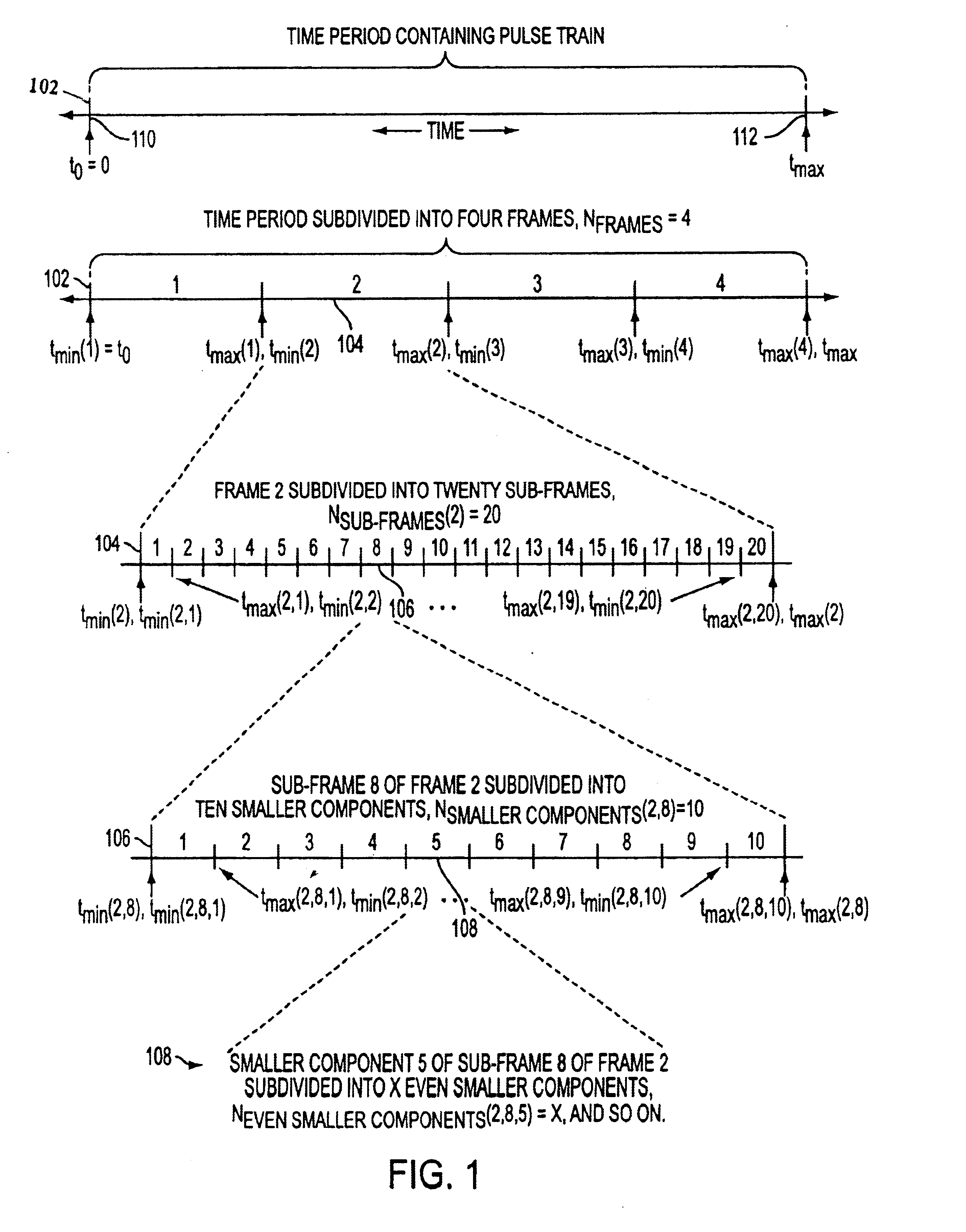Method and apparatus for positioning pulses in time
a technology of positioning pulses and time, applied in the field of impulse transmission systems, can solve the problems of limiting the performance of systems that use continuous sinusoidal waveforms, hardware limitation on the minimum pulse-to-pulse time, and the use of very little power of impulse radio transmitters to generate noise-like communication signals
- Summary
- Abstract
- Description
- Claims
- Application Information
AI Technical Summary
Problems solved by technology
Method used
Image
Examples
Embodiment Construction
[0057]The present invention provides a method of using a generated code to specify positions and other characteristics of pulses within a pulse train. Usually, each generated code consists of a set or a number of code element values. The method of the invention involves defining a layout of the time period over which the pulses arc overlaid. A mapping approach maps the code element values to pulse positions over the layout based on the generated code. In an exemplary embodiment, the code is generated using a numerical code generation technique, and code element values are mapped to pulse positions in accordance with the defined time period layout and code mapping approach.
Time Period Layouts
[0058]In a pulse transmission system, a sequence of pulses known as a pulse train is transmitted and received over a period of time such that the relative positioning of the pulses in time defines a channel used by the system to transmit information. These pulse trains or some combination of diff...
PUM
 Login to View More
Login to View More Abstract
Description
Claims
Application Information
 Login to View More
Login to View More - R&D
- Intellectual Property
- Life Sciences
- Materials
- Tech Scout
- Unparalleled Data Quality
- Higher Quality Content
- 60% Fewer Hallucinations
Browse by: Latest US Patents, China's latest patents, Technical Efficacy Thesaurus, Application Domain, Technology Topic, Popular Technical Reports.
© 2025 PatSnap. All rights reserved.Legal|Privacy policy|Modern Slavery Act Transparency Statement|Sitemap|About US| Contact US: help@patsnap.com



